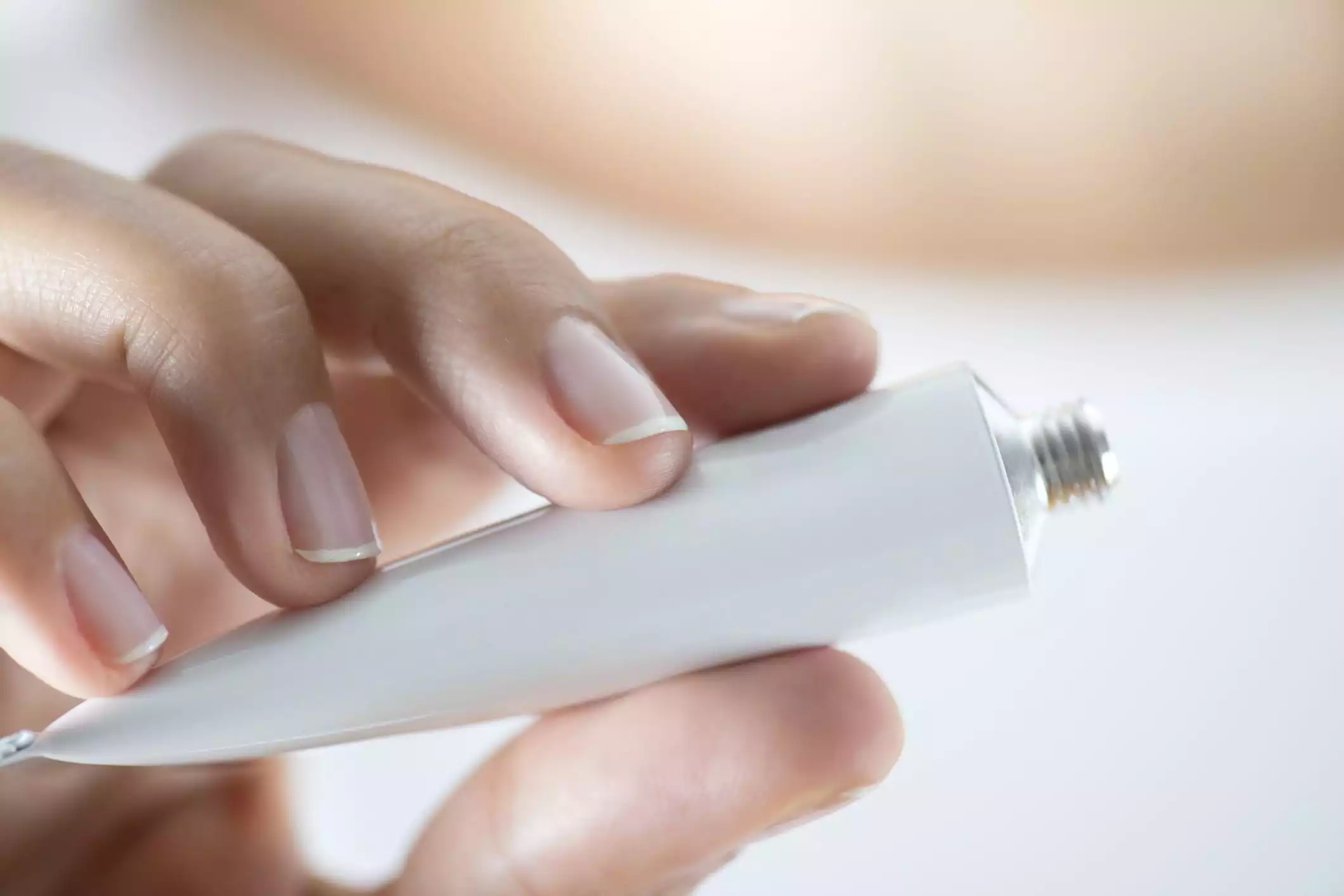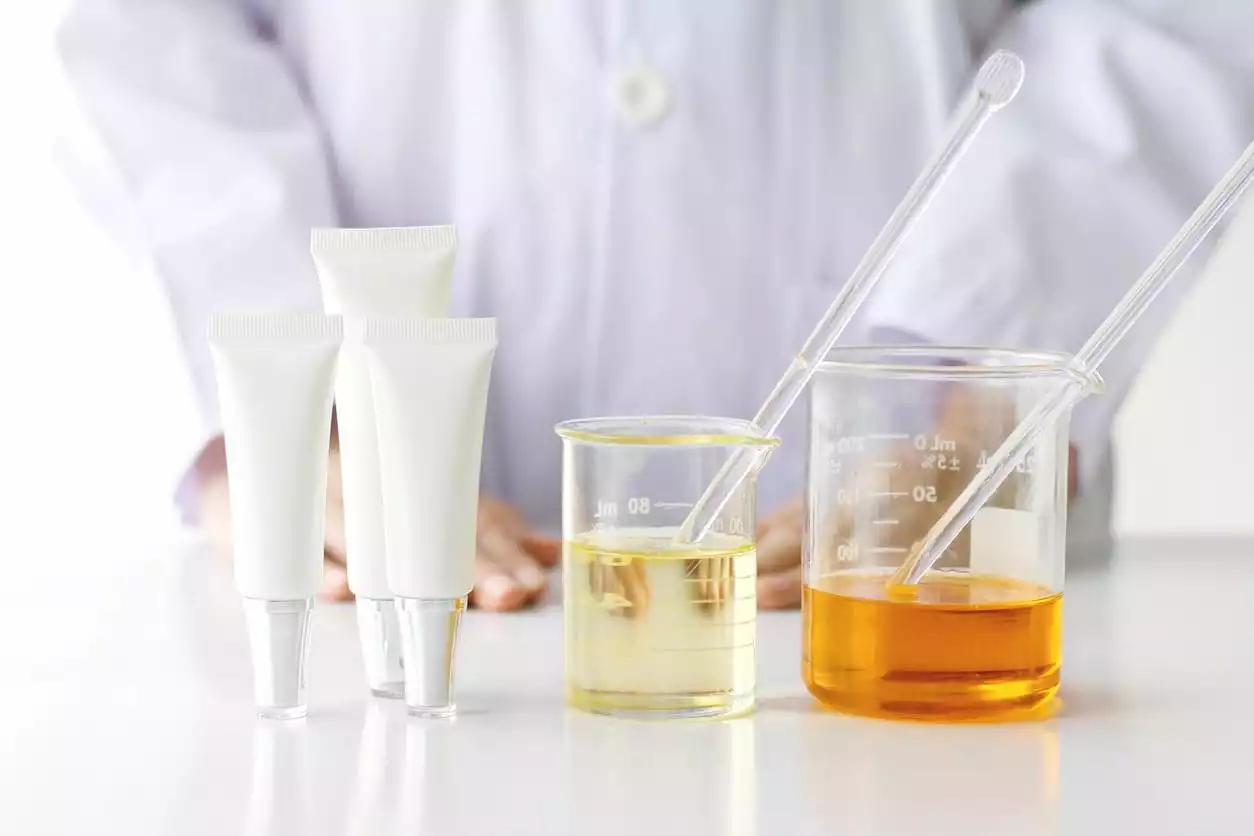
Topical medications are extremely common for issues such as acne, but they actually help a wide variety of problems. Here are the 8 most common topicals that we see prescribed.
While most of us are familiar with taking oral medications in pill or liquid form, medications are often prescribed in a long list of other formats, too.
For example, IV and intramuscular injections are often given after surgery because they can be given to the patient regardless of whether they are awake. They also produce faster results.
Then, there are topical medications for the skin, including buccal and sublingual for absorption via the mucous membranes. These formulas serve an important role in healthcare, and are the treatment of choice for certain conditions.
What Are Topical Medications?
And that’s what we’re here to talk about today – topical medications. These are formulas you use on, rather than in, your body.
Doctors prescribe topicals to treat everything from acne, rosacea, and fungal skin infections to bacterial skin infections, allergies, and even eye infections.
They come in a broad range of formats, including
- lotions
- creams
- gels
- pastes
- ointments
- transdermal patches
- powders
Today, we’ll explain a few of the most common types of topical medications to help you better understand your options.
Option #1: Solutions
Solutions are very thin, almost-liquid formulas with a base made from oil or alcohol.
They are most often used in sprays, drops, or rinses, and can be especially effective for issues with the
- scalp
- eyes
- ears
- nose
Because they’re so thin, the solution spreads out quickly and diffuses rapidly into the first few layers of the derma.
Some patients find solutions made with alcohol drying to the skin, especially if they don’t properly care for the skin between applications.
Others find themselves irritated by fragrances or preservatives mixed into solutions to make application more pleasant.
You can avoid these side effects by telling your pharmacist if you have issues with certain additives; they can adjust your base solution to compensate.
Option #2: Lotions
The term “lotion” is really an umbrella term covering thicker liquids for use on the surface of the skin.
Most formulations contain oil and water with an emulsifier, like alcohol, to make the active medical ingredients soluble.
It is important to note that medicated lotions are not the same as cosmetic hydrating lotions; they usually have a higher water content or lower oil content, making them more drying.
Lotions are super for patients who need to treat large areas of the skin because they spread so quickly and easily.
- Thinner formulas work well for the hair and scalp because they are more readily worked through the hair without sticking to it.
- Pay close attention to the directions on your lotion bottle; you must shake some lotions well to make sure any separated ingredients come back together before use.
Option #3: Creams
Creams are topical mixtures that contain water and oil. Ratios are close, but generally, the formula contains slightly more of one or the other.
Oil in water creams spread easily, and aren‘t as greasy, while water in oil creams are slightly greasier with a lower melting point, meaning they absorb more rapidly and can better penetrate the outer layer of the skin.
Creams always contain emulsifiers that add viscosity. They may also, in some cases, contain preservatives.
Option #4: Gels
Gels are usually relatively transparent, being made from cellulose ethers mixed into a mixture of water and alcohol.
They turn into a liquid almost the instant they come into contact with your skin, leaving a faint film of medication on the surface after the bulk of the formula evaporates.
Most gels contain alcohol or similar ingredients that evaporate faster than water; this makes them a bit drying, but also improves convenience by leaving no greasy or sticky coating after application.
Rapid drying is also ideal for skin folds, as leaving them moist can lead to fungal infections like candidiasis.
Option #5: Ointments
Ointments are made of emollients – substances that excel at protecting and healing dry skin.
These semi-solid mixtures tend to be greasy and sticky, but they are incredibly effective in skin defense because they produce a barrier against environmental influences.
Base ingredients usually include
- petroleum
- paraffin
- mineral oil
The downside of these skin-protecting formulas is that they can also trap sweat. For this reason, they’re not ideal for people with weepy skin conditions or for use during hot weather, especially if you’ll spend time outdoors sweating under the hot sun.
Option #6: Powders
Powders are essentially the same drugs found in pills and capsules; they‘re just crushed into a powder form and/or mixed into a carrier, like corn starch.
Medicated talcum powder, for example, is a common treatment for Athlete’s Foot.
Even inhalers used to treat Asthma are considered topical medications. The medication inhaled is actually a fine powder, rather than a liquid mist.
Option #7: Pastes
Pastes contain a mixture of various ointments and powders.
Powdered medications or ointments may be transformed into pastes to prevent aspirating dust during application; they‘re also harder to rub off of the skin.
Zinc oxide, a diaper rash cream, is a great example of a paste that is difficult to simply wipe away.
Pasted topicals may also treat oral wounds; they stick to the mucous membranes and create a barrier that isn’t easily washed away by saliva. This is ideal when treating canker sores.
Option #8: Transdermal Patches
Transdermal patches have an adhesive base; you stick them to certain areas of the body, such as the upper arm, stomach, thigh, or lower back.
Most patches contain time-release mechanisms that allow the skin to absorb small amounts of medication over the course of several hours or days.
Common examples include birth control and certain types of pain medication.
Compounding Topical Medications
Topical medications are exceptionally common and very easy to customize.
Combining more than one ingredient may not only be a more effective treatment for your condition but could help you more easily comply with and stick to your treatment schedule.
Sometimes, doctors will prescribe a single topical compounded formula to replace multiple
- pills
- lotions
- creams
This is much more convenient and can actually improve treatment for certain drugs.
One of the other advantages in prescribing topicals is that they bypass the liver; this lessens side effects and pressure on the metabolic process.
As they are not ingested, they also do not enter the stomach, lessening the risk for side effects and gastrointestinal upset.
Conclusion
Talk to your doctor about topical medications and whether they may be a more effective alternative for your condition.
They may be a better option, or they may prove valuable when combined with your oral medication protocol.
Either way, your local compounding pharmacist can make sure you receive your medication in a formulation that offers the most effective delivery method and protection for your skin.
And if you need more information about how a compounding pharmacy can help, contact Burt’s Rx today! We offer services such as pediatric compounding, pet compounding, compounded medication for pain management, BHRT, and dental compounding.

 info@burtsrx.com
info@burtsrx.com


